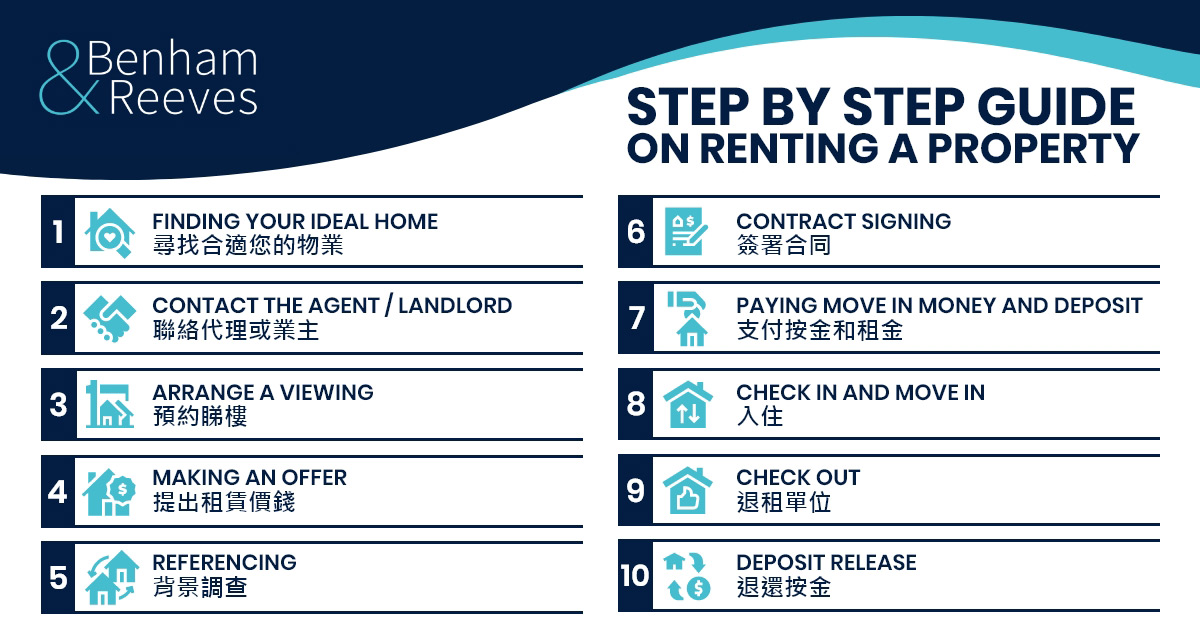
Step 1: Finding your dream home
There are five factors you should think about and concentrate on when shopping for a new home.
1. Where are you searching to live?
2. Bed size – How many rooms are you interested in?
3. Budget: How much money are you planning to spend?
4. Research – Looking for properties on numerous websites, such as Rightmove, Zoopla, OnTheMarket, etc.
5. Utilising a renowned and trustworthy agency
Step 2: Contact the landlord or agent
Always remember to select reputable websites when looking for your dream home on marketing platforms, for instance Rightmove and Zoopla.
The reason for this is that these platforms offer complete transparency regarding the lister (Agency or Landlord). Before publishing, the lister must confirm with the platform, and when listing the properties, they must include contact information and, if relevant, branch addresses. By doing this, the searcher may more easily and securely confirm the legitimacy of the lister before contacting them.
Step 3: Arranging a viewing
After communicating with a landlord or agent about a house you’re interested in, you should always plan a physical inspection to see the home in person.
We advise clients to visit throughout the day to see the property’s or development’s conditions, the surroundings, and, if applicable, facilities. Since everyone has various preferences, this is crucial to know in order to determine whether the property is what you’re looking for.
Step 4: Making an offer
As soon as you have your mind set on a certain development and are prepared to move forward, always keep in mind to write your offer down and give it to your agent or landlord.
Whilst making an offer, you should provide your offer price, your ideal commencement date, term and length of contract, and at last any special request or conditions. Ie. Professional clean before moving in – This is one of the most common requests prospective tenant would request for.
The agency or landlord will typically ask you to pay a one week’s worth of rent as a deposit to reserve the property once the landlord has approved your offer.
Step 5:Referencing
Referencing is typically carried out by a third-party referencing company, which guarantees the validity of the findings and prevents any form of bias or discrimination against the lettings agency, the landlord, and potential renters.
A questionnaire with inquiries about the applicant’s history will be given to the potential tenants. These cover inquiries on a tenant’s eligibility to rent, employment, prior tenancy histories, and credit. Referencing is comparable to a background check in that it results in a report that the agency or landlord receives stating whether or not the applicant is a suitable renter.
Step 6: Deposit
The agency or landlord will present the contract to both parties for signature after determining that the reference report is acceptable. Before moving in, the renter must pay a security deposit equal to 5 weeks’ rent (6 weeks if the yearly rent exceeds £50,000) and one month’s rent in advance, unless otherwise specified in the agreement. The next step is for the agent or landlord to register the deposit with TDS (Tenancy Deposit Scheme). TDS is a government approved scheme to protect all parties from unfair disputes by the end of tenancy.
Step 7 :Check-in/Check-out
On the scheduled move-in date, the agency or landlord will either generate a check-in inventory report themselves or will engage a third-party inventory company. The state of the property and any items that will stay there will be noted in this report.
To safeguard everyone’s best interests, the inventory report should also include images and videos as documentation. The tenant will also have the right to make any necessary adjustments that do not match or were not documented into the report. This report should be given within 7 days of check-in.
A check out report will be completed at the end of the rental period and compared to the check in report. However, if there are additional damages, it is likely that a sum will be withdrawn from the deposit that must be agreed upon by both parties. General wear and tear will be taken into account (landlord & tenant).
The TDS will serve as the middleman to examine and compare both check-in and check-out reports to ensure a fair and reasonable solution for both the landlord and tenant. In any instance, if either party does not agree with the deduction, a dispute must be raised via TDS.
Once all parties have agreed with the solution provided by TDS, a deposit release form will need to be signed and dated by both the landlord and tenant, at last the deposit will this be released back to the tenant, and any compensation will also be released back to the owner.
